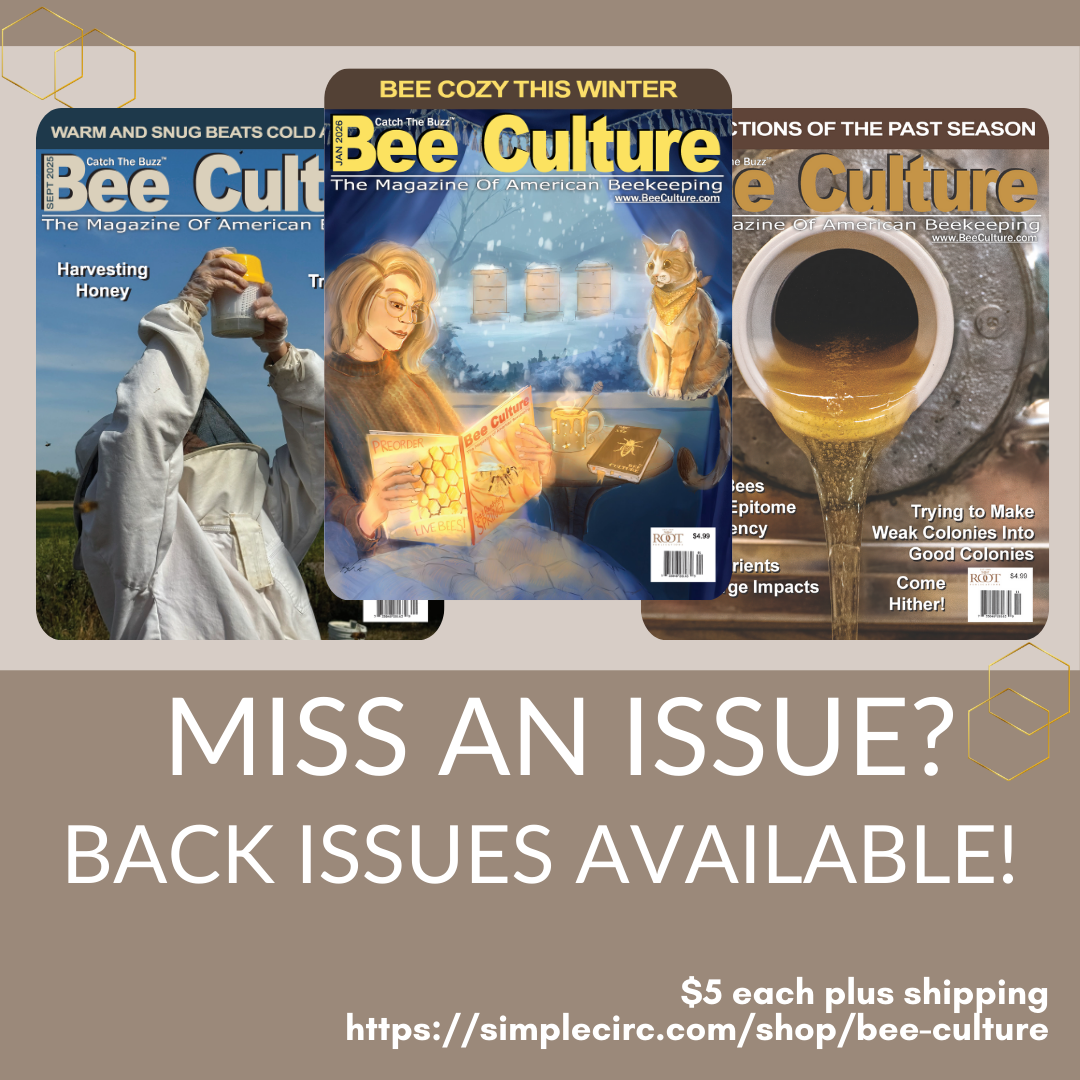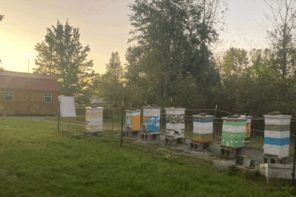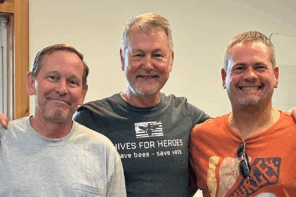Good Help Can Be Found
Dr. Tracy Farone
On a rare day off in mid-May, I went fishing with my family, ironically at Slippery Rock Creek. I found a beautiful tributary off the main stream and walked up the bank to a deep hole I found amongst the car-sized rocks. I had my eye on reaching a large flat rock in the middle of the stream, to plop down and go after a few trout. While traversing a few steps to get to my prized destination, my feet failed me, I slipped, wedged my knee between a rock and log and fell, tearing my anterior cruciate ligament (ACL) and smashing the tibia of my right leg. Even before the doctors’ visits, X-rays, and the MRI, I knew instantly something was seriously wrong. One of my first thoughts was what am I going to do now? How am I going to work? Take care of my family? Build my house? Take care of my bees? Perhaps other beekeepers can relate to “What if I get hurt? How am I going to do life?” I certainly know several Beeks that have struggled through managing their yards with health problems and injuries.
Here is the good news . . . While surgery for an ACL repair can put you on your back for several weeks followed by months of rehab, my orthopedic doctor did not recommend surgery for me but instead said I was a good candidate for physical therapy rehabilitation. He said that in his experience and depending on the individual patient, ACL reconstructive surgery is often a mistake and may cause more harm than good. As a veterinarian, this concept made complete sense to me, but as a patient, I needed to hear it from my physician.
Benign Neglect
In veterinary and human medicine, we have a treatment called “benign neglect”. It essentially means that as a medical professional, after evaluating a patient with a condition, we determine that the best course of action is to do really nothing (with perhaps just supportive care) and wait. Time and the amazing body often heals itself, if given the chance. “Above all else do no harm”, “Go home, rest and drink plenty of fluids”, “Take two aspirin and call me in the morning”, and the placebo effect are all common illustrations of this approach. When diagnostics or treatments are started, we begin with the least or minimally invasive approach. For example, we may try medicines or therapy first, before surgery to address a certain condition. Less can be more in certain situations.
I know that I have preached before in other articles that it is essential for beekeepers to learn how to do a complete hive assessment or exam. That is still very true, however once you have learned how to do a complete hive inspection, you should also be learning when to stop. Risk assessment, risk vs. benefits, should be involved in everything you do in a hive. The why and the how of what you plan to do before opening a hive should be well defined. For example, if you find white wax and eggs do you really need to go through every frame to find the queen to confirm queen status? …maybe, maybe not. You can often gain information needed just by observing the exterior of the hive and entrance, just by “popping the top” and looking in, or simply pulling a few frames. The necessary extent of hive inspections may vary by season, hive/yard history, and the type of beekeeping operation. “Surgery” is not always needed. “Everything in moderation” applies to our invasive behaviors when working our hives, but it comes down to a (hopefully educated) judgement call by the beekeeper. As a beekeeper you may need to recruit some help from a seasoned beekeeper or veterinarian on what level of intervention your hive/s may need.
Helping each other and how beekeepers can help vets . . .
Every one of us needs help sometimes. From what I have seen, most beekeepers are pretty good at forming groups that lean on each other in tough times, but I believe this symbiotic relationship can be expanded. I have listened to the concerns that beekeepers have about the difficulty of finding a competent, local veterinarian to help them. From the veterinary side I can share this: Currently, bee medicine curriculum in U.S. veterinary schools is being developed and delivered, more honey bee veterinary textbooks and references are being created, hundreds of hours of honey bee continuing education for practicing veterinarians have been developed and delivered, and a bee vet certification program is under development. In previous articles, I have shared ways veterinarians can be of service to honey bees and their keepers, but how can beekeepers get involved on our end? Here are a few action steps beekeepers can take to help veterinarians.
1. Invite your local veterinarian/s to your beeyard to shadow you.
2. Invite your local veterinarian/s to your beekeeping meetings. Most may say “no”, but you only need one in your area to take care of the local bees.
3. Reach out to local Veterinary Medical Associations (VMAs). Like beekeeping clubs, most states have state and/or regional veterinary associations. Most VMAs are very interested in learning more about bees and working with beekeepers.
4. Reach out to your state Department of Agriculture (DA). Most states have apiarist/s and state veterinarians working at the DA. These groups have started more conversations lately and may have resources available for you or be interested in collaborations.
These help suggestions do not have to be as difficult as “surgery” but simply provide supportive care for a healthy, symbiotic relationship.
As for me and my broken knee, luckily, I have “paid it forward” by previously allowing a neighborhood teenager to shadow me at my home beeyard and I have two trained Summer research college students to help me do much of the “heavy lifting” around the College yard this Summer.












